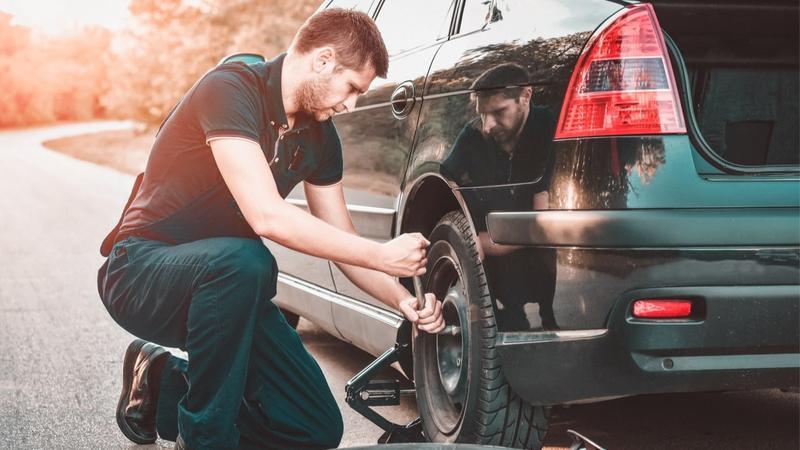- 70% of vehicles have at least one tire with an inflation problem.
- Get a wheel alignment yearly to avoid uneven tread wear.
- Monitor your tire’s tread depth with the Bluenose test.
Tires are a vital part of your vehicle. They’re the only thing between you and the road. Stay safe, and save some money too, by ensuring your tires are maintained properly. Well-maintained tires will last longer, increase your fuel efficiency, improve your vehicle’s driving performance, and most importantly, contribute to your overall road safety.
1. Keep your tires properly inflated.
Under or over-inflated tires may not accelerate, brake or steer properly. Check your tire pressure at least once a month when the tires are cold, that is, before you head out for a drive. Chances are you’ll find that you need to make an adjustment.
According to the Tire and Rubber Association of Canada:
- 70% of vehicles have at least one tire with an inflation problem.
- 23% of vehicles have at least one tire under-inflated by more than 20%, and this increases your vehicle’s fuel consumption and reduces the lifespan of your tires.
- 17% of vehicles have at least one tire over-inflated by more than 20%, resulting in excessive tire wear and reduced vehicle handling.
Tip: Not sure what your tire pressure should be? The vehicle information placard is a small sticker that lists the proper pressure for both your front and rear tires. Often, it’s located on the driver side, front or back door. If you’re unable to find it, refer to your owner’s manual. Do not rely on the number found on the side of your tires because that’s the maximum tire pressure, not the recommended tire pressure.
2. Rotate your tires regularly.
Rotating your tires will extend their life and improve performance. It’s recommended you rotate your tires once every 10,000 to 12,000 km or six months.
3. Get a wheel alignment.
Every year, or about 25,000 km, get a wheel alignment to avoid uneven tread wear. Daily impacts such as potholes and railroad crossings, over time, can easily knock your vehicle’s tires out of whack.
4. Make sure your tires are balanced.
Having unbalanced tires can lead to rapid and premature tire tread wear. You should have your tires balanced every time you change or rotate your tires or when you install a new set of wheels.
5. Frequently inspect your tires.
When you’re checking your tire pressure, also visually inspect your tires and be on the lookout for cracks or bulges, objects lodged in the tire, punctures, and uneven tread wear.
